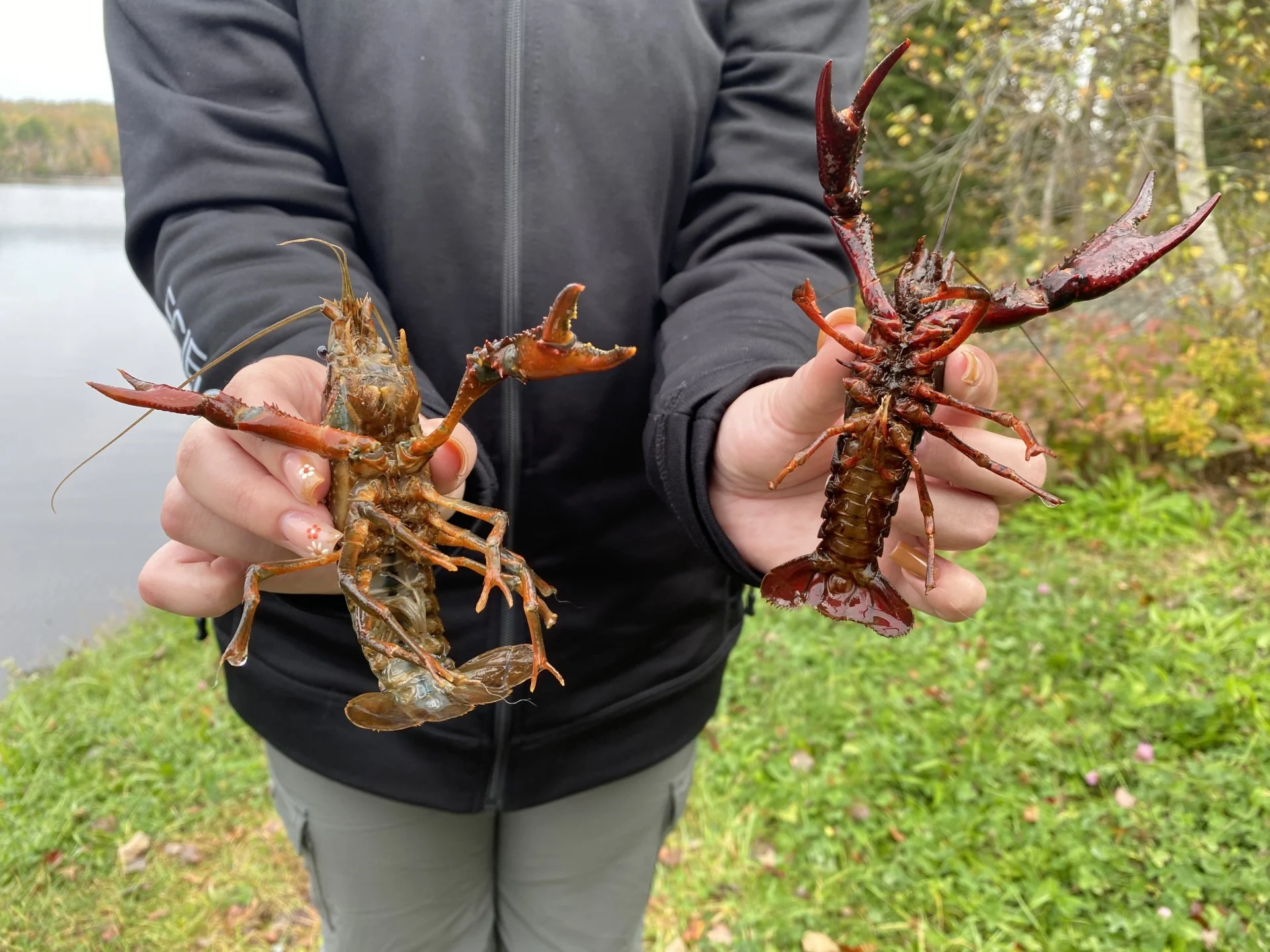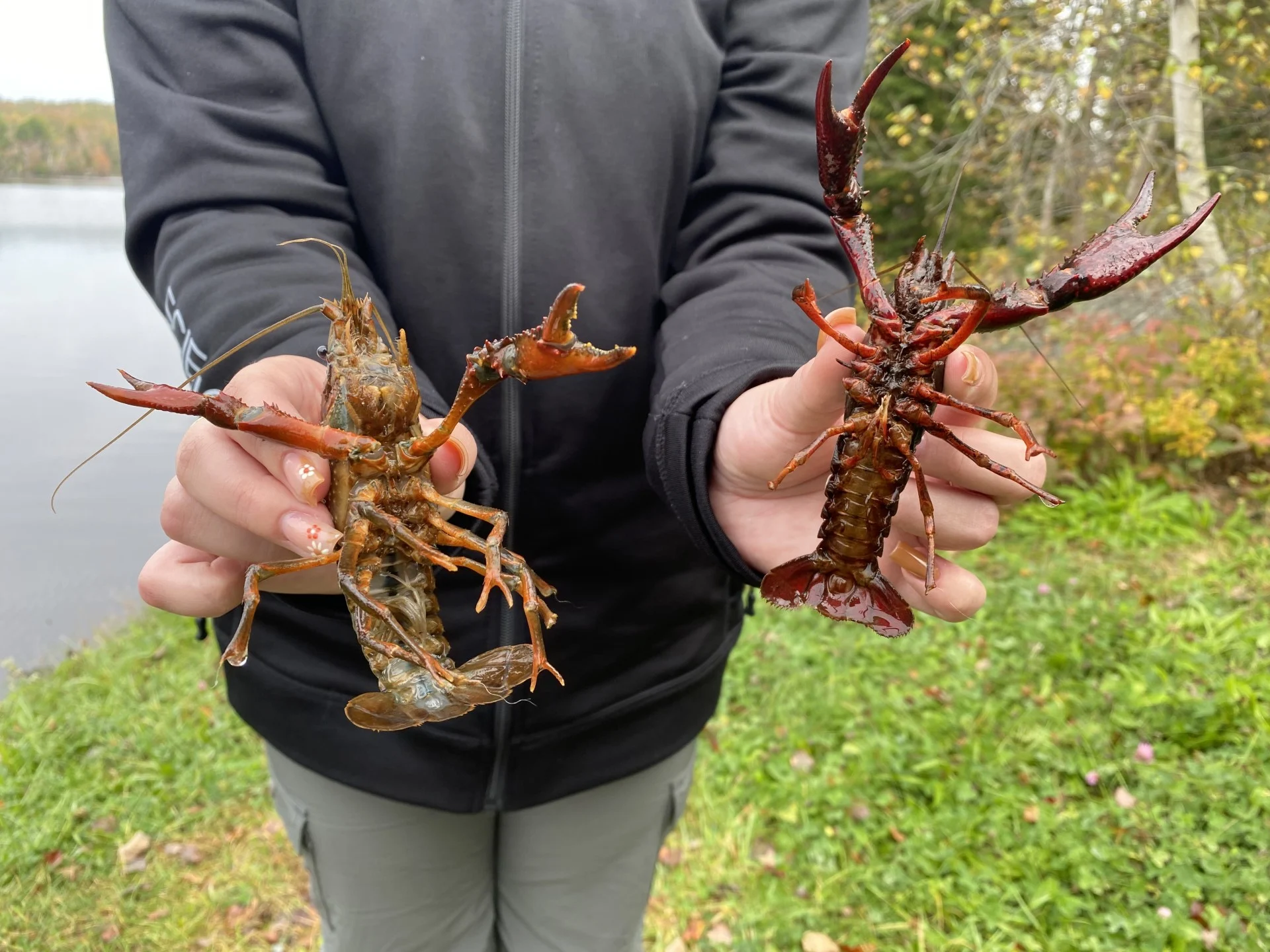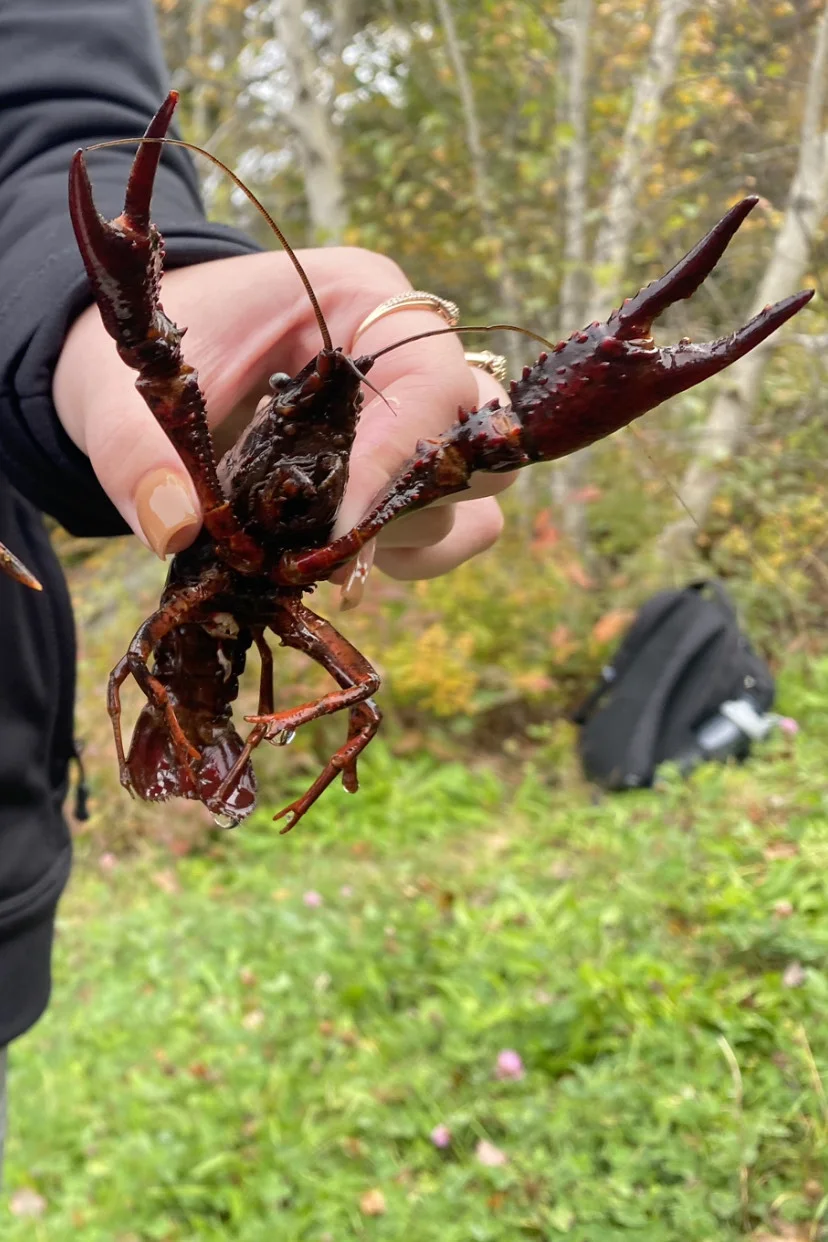
New invasive aquatic species found in Nova Scotia
These invasive crayfish can host multiple types of parasites
Red swamp crayfish are common in places like Louisiana, but in Nova Scotia, they're an invasive species.
On Thursday, The Department of Fisheries and Oceans (DFO) held a press conference on the banks of Halifax Regional Municipality's Three Mile Lake to reveal their presence, which was first reported to them via a Facebook post in September 2022.
That sighting has now led to the trapping of 70 more at Three Mile Lake, with St. Mary’s University science students conducting research over the past five months.
“This type of crayfish has severe or potentially severe impacts on ecosystems," said DFO's senior aquatic invasive species biologist, Sarah Kingsbury. "It can alter the ecosystem's structure. It preys on fish eggs and competes with native species for available resources and space."

DFO is asking the public to report any sightings of these crayfish. (The Weather Network)
SEE ALSO: What El Niño will mean for Canada's 2023-24 winter
The crayfish can get up to 12 cm in length and alter the physical habitat structure through burrowing, and for property owners around the lake, that could mean bank erosion and destabilization.
Their exact impact on other local species is still being studied, but with hard shells, they'll need calcium, so they will compete with other species like freshwater mussels.
How the crayfish made it into Nova Scotia is yet to be determined, but they are available through the live organism trade for food and are also used by fishermen for bait.

The crayfish should only be handled by aquatic experts. The public is advised not to touch or pick them up if found. (The Weather Network)
Mild winter weather would only serve to help them survive.
“Crayfish make burrows, and they stay in their burrows during the wintertime, and if that burrow water doesn’t freeze, then they have a higher chance of survival," said Kingsbury.
DFO is asking the public not to pick up any of the crayfish if they see them, as it could impact their trapping operations and lead to introducing them elsewhere. Crayfish can also host multiple types of parasites. If you do spot one, you can contact researchers at smu.ca/crayfish.










